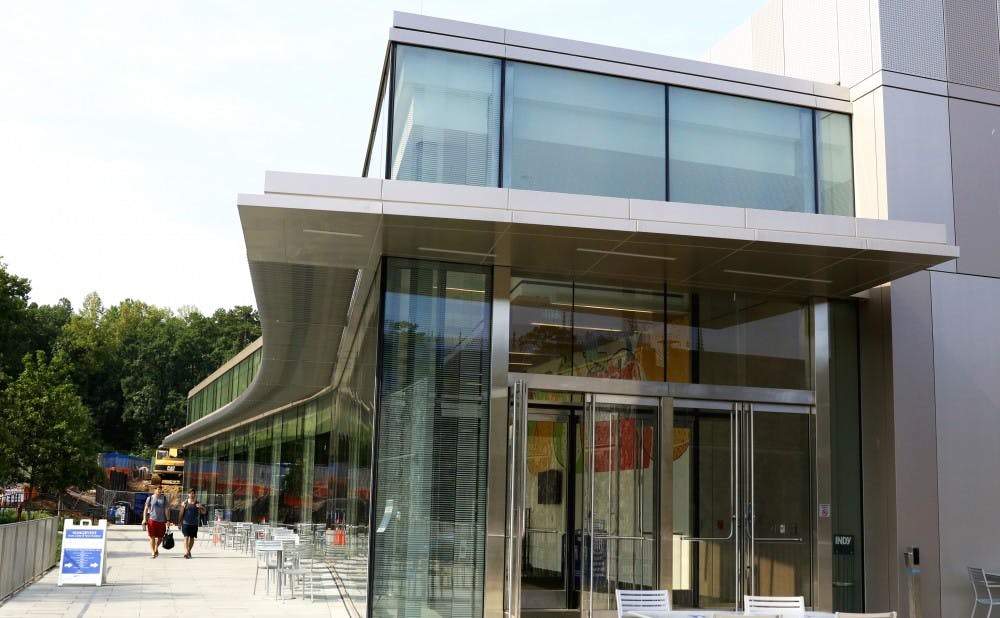As construction continues around campus, glass additions to buildings are becoming more prevalent.
Although West Campus is known for its Gothic architecture with buildings like Perkins Library and the Chapel, construction has brought some more modern styles to campus. Notably, the Bryan Center, the Levine Science Research Center, Penn Pavilion and the new West Union feature glass additions that are more reminiscent of International Style architecture. This shift from traditional to more modern buildings is due, in part, to cost limitations of using the original Duke stone.
“The last Duke stone building built was the Allen Building in 1954, and they came to view that they couldn’t afford to continue with those,” Executive Vice President Tallman Trask said. “We’ve been trying to build Duke-like buildings, but on a budget you can actually afford.”
Trask noted that the Westbrook Wall, an addition to the Divinity School, was nine times the price per square foot of CIEMAS because of its use of the Duke stone. The Chronicle reported in 2013 that mining the stone costs $500 per ton with one ton covering only 20 square feet.
Despite the new abundance of glass structures on campus, Trask said that there will likely not be any more new buildings with this design.
“I think used strategically and in relatively small amounts, it is an interesting change,” Trask said. “We’re just trying to lighten up some very old buildings. You’re not going to see a glass front on the Chapel.”
Although the new additions to campus may be more cost-efficient, several students noted that they appreciate the traditional Duke architecture.
“The Gothic architecture is one of the reasons I came to Duke,” senior Kate Abendroth said. “Now we’re going to have to eat in a big glass box in West Union. That just seems very not Duke to me.”
Other students said that they approved of the glass additions, however.
“I actually think they look nice,” said Fred Lang, a sophomore. “I wish they could have been built faster, but it’s definitely a visual upgrade.”
Caroline Bruzelius, Anne M. Cogan professor of art history, argues that buildings like Penn Pavilion do fit in with the neo-gothic style.
“Whether you’re talking about The Perk, at Perkins Library, which is a beautiful kind of gothic skeleton but really a glass box, those are versions of the open luminous architecture that we are able to achieve nowadays through the combination of modern materials and glass,” Bruzelius said. “This goes back to Gothic, at its distant origins.”
A Gothic cathedral expert, Bruzelius said that she is “thrilled” by the changes in architectural style at Duke.
“Life is always changing,” Bruzelius said. “And everything changes with it—our own personal lives, our lives as communities, our lives as institutions and also our technical and aesthetic interests change. So, to stick with the gothic style and say ‘that’s the only thing we want’ would be so mistaken.”
These glass boxes are not the first departure from the original Duke stone in an effort to stick to budget. Duke brick—imported from Kansas—has blue hues and has been used on buildings around campus including the Krzyzewski Center. Each brick costs less than $1.
Get The Chronicle straight to your inbox
Signup for our weekly newsletter. Cancel at any time.

